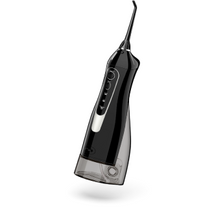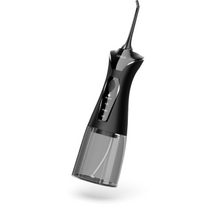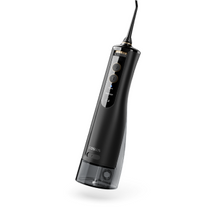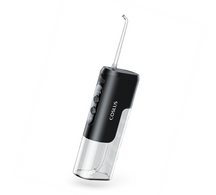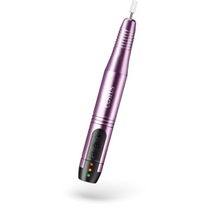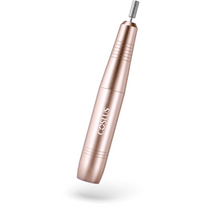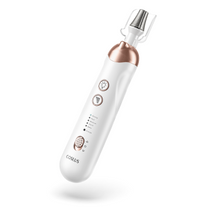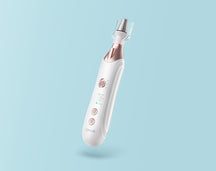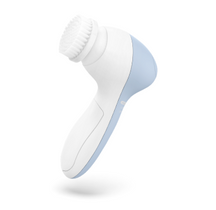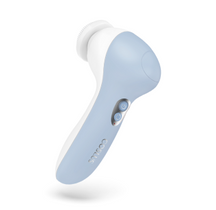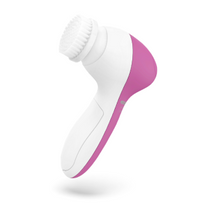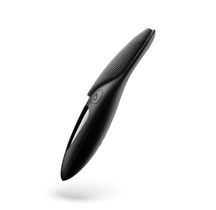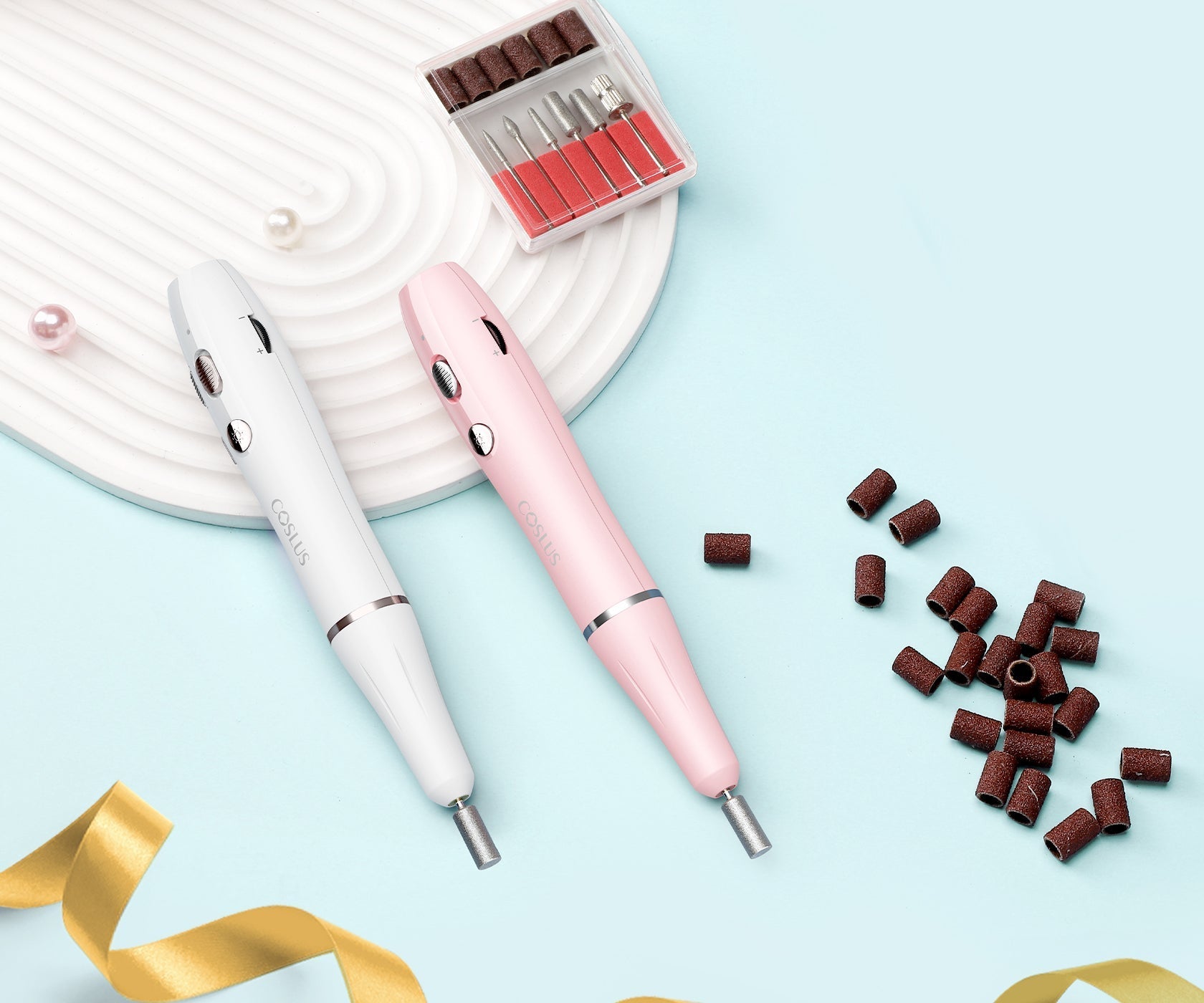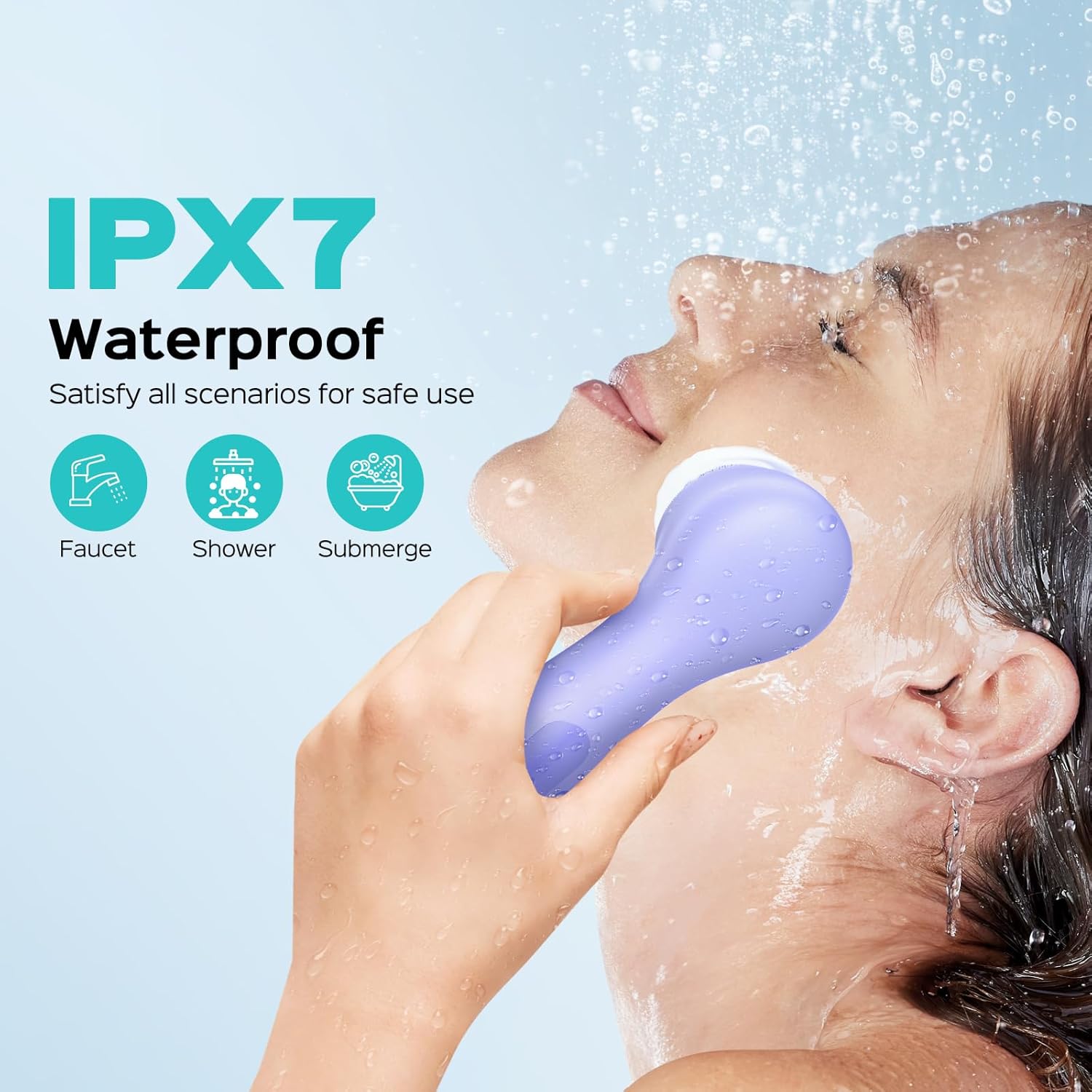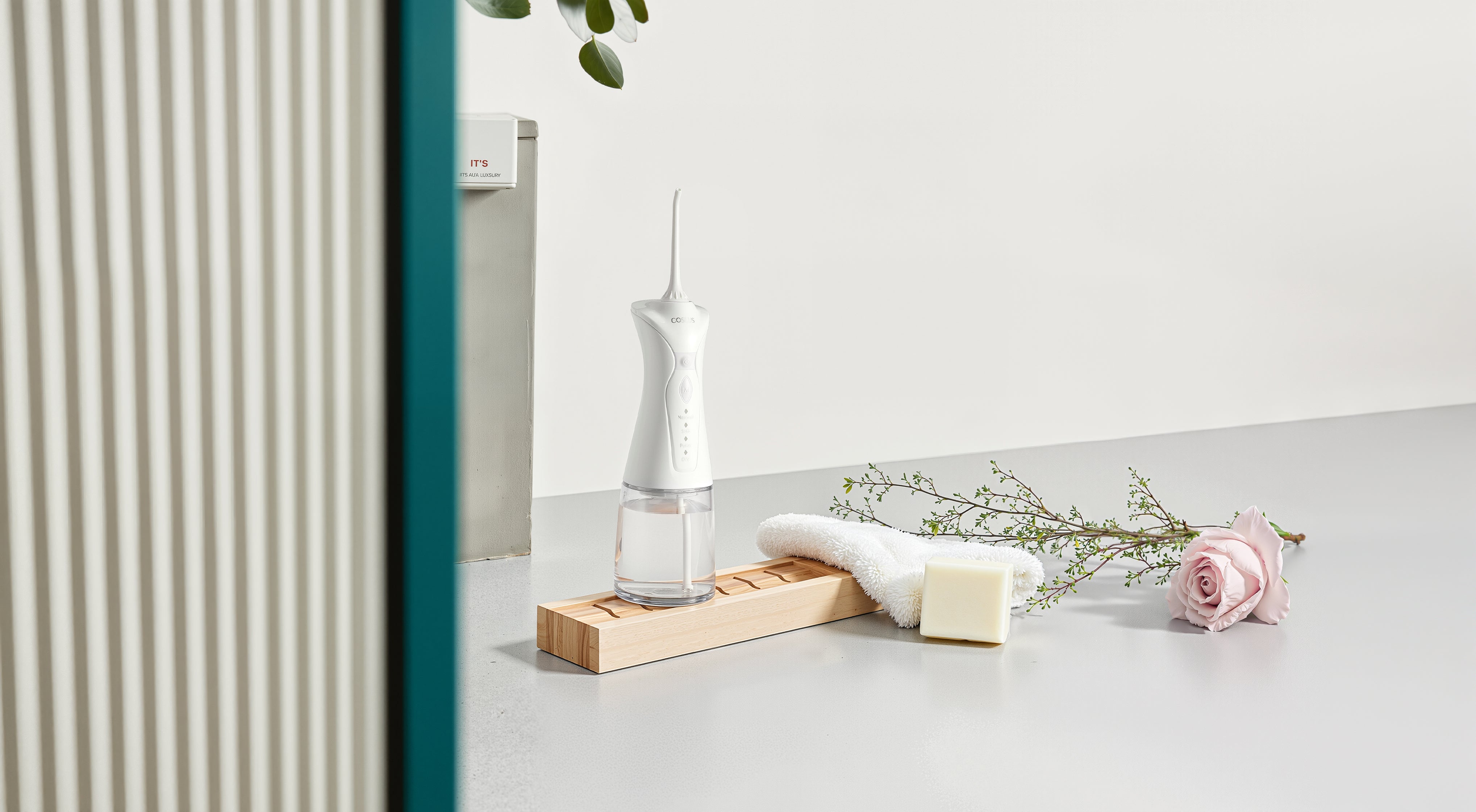
Dental Floss vs Water Flossers: Which Actually Works Better?
Keeping your teeth clean between brushing can be confusing with so many options available today. Most people wonder whether they should stick with traditional dental floss or invest in a modern water flosser for better results. Traditional string floss uses thin nylon to physically remove plaque between teeth, while water flossers use streams of pressurized water to wash away debris. The truth is, both methods work well—dentists agree that the best flossing method is simply the one you'll actually use every day.
What is Dental Floss?
Dental floss is a thin strand specifically designed to clean between your teeth where your toothbrush can't reach. Made primarily of nylon or Teflon (a type of polytetrafluoroethylene), these materials provide the perfect balance of strength and flexibility to slide between tight spaces without breaking or fraying.
Different types of dental floss are available to suit various needs:
- Waxed floss: Coated with a light wax layer that helps it glide more smoothly between tight teeth contacts, making it less likely to shred or break. Ideal for people with closely spaced teeth.
- Unwaxed floss: Thinner and made of many nylon strands twisted together. Some dental professionals believe unwaxed floss cleans more effectively because it doesn't have a slippery coating, though it may be more prone to breaking between tightly packed teeth.
- Flavored floss: Available in mint, cinnamon, and other flavors to make the flossing experience more pleasant and leave a fresh feeling afterward.
- Dental tape: Broader and flatter than regular floss, making it especially effective for people with wider spaces between teeth or those with dental bridges and other restorations.
Each type offers specific benefits depending on your teeth spacing, sensitivity level, and personal preference, but they all serve the essential purpose of removing plaque and food particles from between teeth that brushing alone can't reach.
How to Use Dental Floss Correctly
Getting the most from your daily flossing routine starts with proper technique. Many people floss regularly but miss out on the full benefits because of small technique errors. Here's how to floss effectively:
Step-by-Step Flossing Guide
1. Start with enough floss: Break off about 18-24 inches of floss. This gives you plenty to work with and allows you to use a fresh section for each tooth.
2. Hold it properly: Wind most of the floss around your middle fingers on both hands, leaving 1-2 inches of floss to work with between your hands.
3. Control with your thumbs and index fingers: Use your thumbs and index fingers to gently guide the floss between your teeth.
4. Use a gentle motion: Slide the floss between teeth using a gentle back-and-forth motion. Avoid snapping or forcing the floss, which can damage your gums.
5. Create a "C" shape: Once the floss reaches the gumline, curve it into a C-shape against one tooth and gently slide it into the space between the gum and tooth.
6. Clean thoroughly: Move the floss up and down against the side of each tooth, making sure to go slightly below the gumline where bacteria collect.
7. Use fresh sections: As you move from tooth to tooth, unwind fresh floss from your fingers. Using a clean section for each tooth prevents transferring bacteria between teeth.
8. Don't forget the back: Be sure to floss the back side of your last teeth as well.
Common Flossing Mistakes to Avoid
- Snapping the floss: This can cut your gums and cause pain and bleeding. Always use gentle, controlled movements.
- Not reaching the gumline: The most harmful bacteria hide just below the gumline. Make sure your floss curves slightly beneath the gum.
- Using the same section of floss: This spreads bacteria from one area to another. Always move to a fresh section for each new tooth.
- Flossing too quickly: Effective flossing takes time—about 2-3 minutes. Rushing through it leaves plaque behind.
- Skipping teeth: Make sure to floss between all teeth, including those hard-to-reach back molars where food often gets trapped.
Why Traditional Flossing Remains Essential for Oral Health
Traditional dental floss continues to be a fundamental component of effective oral hygiene despite technological advances in dental care products. The following benefits highlight why this simple tool remains irreplaceable in maintaining optimal dental health.
Floss Reaches Where Your Toothbrush Can't
Traditional floss excels at removing plaque between teeth, especially in tight spaces where toothbrushes cannot reach. The physical contact of string floss against tooth surfaces provides superior mechanical cleaning of interdental areas, effectively dislodging stubborn bacteria and food particles that contribute to decay.
Floss Is Affordable and Easy to Find
As one of the most cost-effective oral hygiene tools available, traditional floss offers exceptional value for dental care. Found in virtually any pharmacy or grocery store, floss comes in various options to suit personal preferences without requiring electricity, batteries, or special equipment.
Take Floss Anywhere, Use It Anytime
The remarkable portability of traditional floss makes it ideal for maintaining interdental cleaning anywhere. Small enough to fit in pockets, purses, or travel kits, floss can be used on-the-go without special equipment or water sources.
Dental professionals consistently endorse traditional flossing technique as essential for comprehensive oral hygiene. Regular flossing helps prevent gingivitis by removing bacteria at the gumline and reduces the risk of more serious periodontal conditions.
What is a Water Flosser?
How Water Flossers Work
A water flosser (also known as an oral irrigator) cleans between teeth using a pressurized stream of water rather than string. The device delivers a targeted jet of water through a small spout or floss tip that you position around your teeth while leaning over a sink. This water pressure effectively dislodges food particles, plaque containing bacteria, and debris from between teeth and along the gumline. The gentle yet thorough cleaning action reaches into areas that are difficult to access with traditional brushing alone, including deep gum pockets.
Types of Water Flossers
Countertop Water Flossers
Countertop models connect to an electrical outlet and feature a water reservoir base with a handheld wand. These units typically offer:
- Larger water capacity requiring less frequent refilling
- More powerful and consistent water pressure
- Multiple pressure settings for customized cleaning
- Specialized tips for different needs (orthodontic, periodontal)
- Greater stability during use
Cordless Water Flossers
Cordless models are compact, portable units powered by batteries or rechargeable systems. Their advantages include:
- Travel-friendly design that fits easily in luggage
- No need for electrical outlets
- Convenient for small bathrooms with limited counter space
- Easier maneuverability around the mouth
- Simpler setup and maintenance
Both types can be particularly beneficial for people with braces, dental implants, crowns, or those with dexterity issues that make traditional flossing challenging. However, dental professionals generally recommend using water flossers as a supplement to, rather than a replacement for, traditional string floss for optimal oral health.
How to Use a Water Flosser Correctly
Step-by-Step Instructions
1. Fill the reservoir with lukewarm water (cold water may cause sensitivity).
2. Select the appropriate tip for your needs and attach it firmly to the handle.
3. Start with the lowest pressure setting, especially if you're a first-time user. You can gradually increase as you become comfortable.
4. Lean over the sink to avoid mess, keeping your mouth slightly closed around the tip.
5. Turn on the device while the tip is in your mouth to prevent water spraying.
6. Place the tip at a 90-degree angle to your teeth, about 1/4 inch away from your gum line (not directly against teeth).
7. Focus on the gum line where teeth and gums meet—this is crucial for effective cleaning and plaque removal.
8. Follow a methodical pattern: start with back teeth and work your way around, pausing briefly (2-3 seconds) between each tooth.
9. Close your lips slightly to prevent splashing while allowing water to flow out into the sink.
10. Turn off the device before removing it from your mouth.
Benefits of Water Flossers
They Are Easier for People with Special Needs
Water flossers are easier to handle for people with dexterity issues or arthritis. They work around braces and dental implants without getting caught or damaged. The simple technique requires minimal coordination, unlike the precision needed for string floss.
They Clean Hard-to-Reach Areas
Water flossers reach tight spaces between teeth that traditional floss might miss. They clean deeper periodontal pockets effectively, flushing out hidden bacteria. The water stream navigates easily around bridges, crowns, and other dental work.
They Are Gentler on Sensitive Gums
The pulsating water is gentler on sensitive or receding gums than string floss. Adjustable pressure settings let you customize cleaning intensity to your comfort level. Many users experience less bleeding and irritation when switching from traditional floss.
They Help Prevent Gum Disease
Regular water flossing helps prevent gum disease by removing harmful bacteria. The streaming action effectively disrupts and washes away plaque biofilm. Water flossers complement brushing in a complete oral hygiene routine for optimal health.
Dental Floss vs. Water Flossers: A Head-to-Head Comparison
Good oral hygiene goes beyond just brushing your teeth. Cleaning between teeth helps prevent gum disease and tooth decay. Traditional dental floss and water flossers are two popular options for this task.
| Feature | Dental Floss | Water Flossers |
| Effectiveness | Physically scrapes away plaque; reaches tight spaces between teeth | Removes more plaque according to studies; better for cleaning around braces and dental work |
| Ease of Use | Requires good hand coordination; can be difficult to master | Simple to use; great for people with limited dexterity or braces |
| Cost | Very affordable ($2-5); minimal ongoing expense | More expensive upfront ($30-100+); needs replacement tips |
| Portability | Extremely compact; fits anywhere; no power needed | Bulkier; needs charging and water source |
| Maintenance | No maintenance; just dispose after use | Needs regular cleaning; parts wear out over time |
Both dental floss and water flossers have their strengths. Traditional floss is cheaper and more portable, while water flossers are easier to use and better for people with braces or dexterity issues. Many dentists recommend using both: dental floss for its effective scraping action and water flossers for flushing out debris from hard-to-reach spots.
Not everyone finds traditional string floss easy or comfortable to use. While both methods can effectively clean between your teeth, certain situations make water flossers particularly helpful. Here's when you might want to consider choosing a water flosser for your daily routine:
- If you have arthritis or dexterity issues, choose a water flosser with an ergonomic handle to make daily cleaning easier.
- For children learning oral hygiene habits, water flossers are more engaging and simpler to master correctly.
- When wearing braces or orthodontic appliances, use a water flosser with an orthodontic tip specifically designed for cleaning around wires and brackets.
- If you find traditional flossing painful, try a water flosser or floss picks as gentler alternatives that still provide effective cleaning.
- If you have dental implants, use a water flosser with specialized implant tips to clean around abutments without scratching them.
- For seniors in assisted living, recommend water flossers to caregivers as they're easier to help with than traditional flossing.
- When recovering from dental surgery, follow your dentist's recommendation, typically using a water flosser on the lowest pressure setting.
- If you have consistently bleeding gums despite good technique, try combining methods—water floss first to loosen debris, then follow with string floss for thorough cleaning.
Choose Your Perfect Flossing Tool Today
Whether you pick regular floss, a water flosser, or both, what matters most is cleaning between your teeth every day. Regular floss is cheap and portable, while water flossers are easier to use and better for braces. Think about what works for your specific needs—do you travel a lot? Have trouble with hand movements? Wear braces? Not sure which to pick? Just ask your dentist at your next visit. The best tool is simply the one you'll actually use consistently, because regular cleaning between teeth keeps your smile healthy for years to come.
Table of Contents
- What is Dental Floss?
- How to Use Dental Floss Correctly
- Why Traditional Flossing Remains Essential for Oral Health
- What is a Water Flosser?
- How to Use a Water Flosser Correctly
- Benefits of Water Flossers
- Dental Floss vs. Water Flossers: A Head-to-Head Comparison
- Choose Your Perfect Flossing Tool Today
Table of Contents
- What is Dental Floss?
- How to Use Dental Floss Correctly
- Why Traditional Flossing Remains Essential for Oral Health
- What is a Water Flosser?
- How to Use a Water Flosser Correctly
- Benefits of Water Flossers
- Dental Floss vs. Water Flossers: A Head-to-Head Comparison
- Choose Your Perfect Flossing Tool Today


